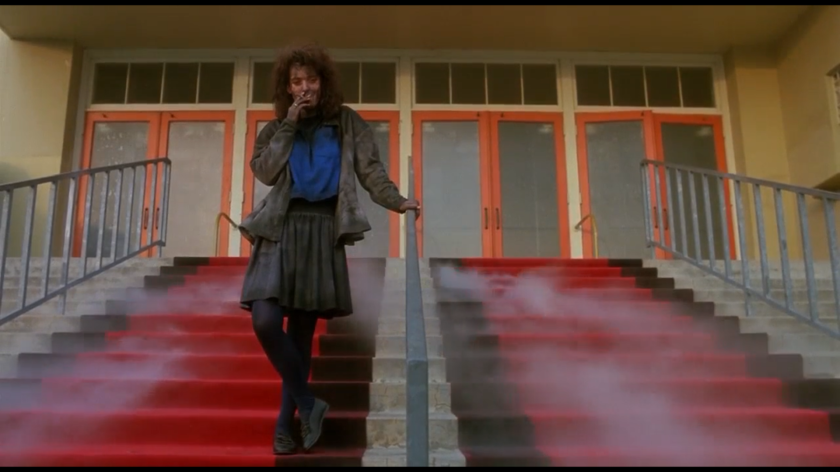When we imbibe a narrative, we expect some basic things: a plot, some characters, a world, and an artistic form that makes these things cohere, even if the coherence itself doesn’t necessarily make sense, like in Upstream Color (2013). Sometimes, the coherence is radically different from yet uncannily similar to the world that we live in, and we call that farce. Other times, it resembles our world, but then reveals an underlying logic that is wholly incompatible with our notions of reality, and we call that black comedy. If farce is the implausibly possible (Kiss Kiss Bang Bang (2005), In Bruges (2008)), then black comedy is the plausibly impossible (Mr. Right (2015), Heathers (1988))—a fine line, I know. And both of them throw realism out the window.
What makes Heathers (1988) so good is the contrast between the anarchic Jason Dean (Christian Slater, channeling Jack Nicholson) and the non-Heather Heather Veronica Sawyer (Winona Ryder). Ryder’s character has been seen as an audience surrogate, but that’s just a by-product of her actual function: someone with a working sense of morality. She knows what she’s doing is wrong, but that fact itself, twisted by her attraction to the reality-denying aura of JD, is rendered erotic.
Isn’t that what the attraction of coolness is all about? the reality-denying, fundamentally anarchic possibility of escapism rendered permanent? The entire film is impervious to reality, from the brazenly public concocting of schemes in the opening cafeteria scene, to Veronica’s monocle (really?), the successful fake suicides, and the fact that Veronica’s still standing after the explosion. Alan Zilberman sees it as a satire, but regardless of its barbs, Heathers is much too caustic a film to care about whether there’s a point to be made; Christine Hubbard interprets the last scene as establishing Veronica is the new queen bee (as Mean Girls (2004) would put it), when in fact Veronica’s reveling in the complete demolition, at least for the moment, of the social hierarchy. By putting the ribbon on her burned-out hair, she’s not using it to elevate herself, but dragging its symbolism down to her level, the level of social inexistence after her “suicide” has become established rumor.
There’s no question of law-and-order justice being done in this film. Even when the cops are chasing JD and Veronica, if they’d been caught, I would’ve fully expected them to dynamite their way out of jail à la the Joker in The Dark Knight (2008), of whom Slater reminds me in every scene. As recounted in the oral history linked to above, the original ending had JD successfully blow up the school—which explains why, building up to the ending, I genuinely couldn’t tell if he would succeed by coasting on the logic of the film, or be prevented by the moral expectations of society, and was actually rooting for him. It would’ve been a much more tonally consistent and aesthetically pleasing ending. Instead, we have to settle for a personal burst of glory, and a Veronica newly liberated from the Heathers, from JD’s oxymoronic anarchic control, and from the last vestiges of the reality principle.
Heathers is filled with wannabe-quotable lines, fashion styles so old they’re fashionable again, and a Winona Ryder who, though she’ll never be that young again, is equally as iconic as she is today. If it could’ve just given one fuck less, it would’ve been a masterpiece.

On a related note, Roger Ebert’s review opens with perhaps the best opening line of any film review in history, ever: “I approach “Heathers” as a traveler in an unknown country, one who does not speak the language or know the customs and can judge the natives only by taking them at their word.”
Editor’s note: A film that does go all the way is Tragedy Girls (2017), which is less Mean Girls than Heathers, but that one has its own problems.

3 thoughts on “The Art of Not Giving a Fuck: Heathers (1988)”